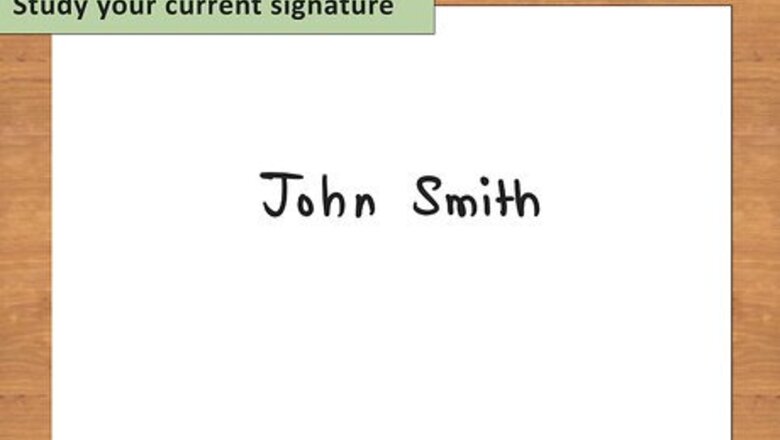
views
Creating A Signature That You Like

Study your current signature. Sign your name on a piece of paper and look at it carefully. What do you wish you could do differently? Identifying the changes you would like to make will help you make a plan for improving your signature. Assess readability. Could someone decipher your name or initials easily by looking at it? Think about whether you would prefer a cursive or print signature, or a mixture of both. Look at specific letters, particularly your initials. Do you like the way they look, or is there a particular letter that you think is not very appealing?

Research signatures. Finding a style that you like may help you decide what changes to adopt. Begin by researching the signatures of people that you admire. You may find inspiration in their autographs. If you are an artist planning to sign your work, focus on the work of other artists. Consider the medium used; a painted signature is often more simple than a written one, but it should still be distinctive. Research historical signatures. In the past penmanship was a more important skill, so you may find examples of beautiful handwriting from people in the nineteenth or early twentieth century. The signatures of presidents or prominent writers are easy to find online.
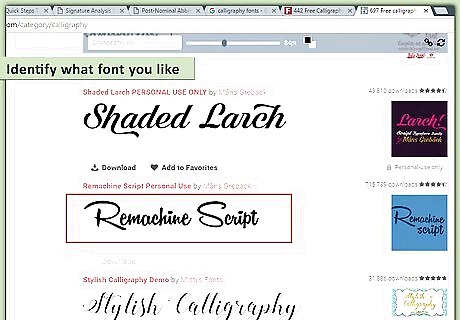
Identify what font you like. If you are drawn to ornate cursive letters, vintage penmanship manuals may provide good inspiration. You may want a more angular and jagged look. Searching through font databases, or checking a calligraphy book out from a library may help you decide on a preferred style. When you find a font, print or make a photocopy of the suggested alphabet. You may find several that appeal so choose your favorite letters from each.
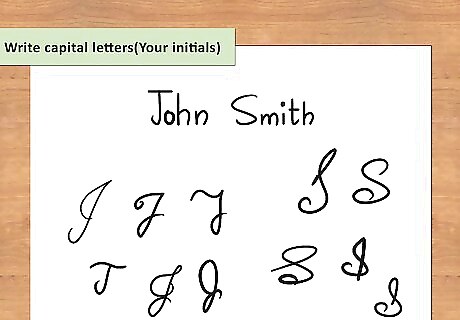
Write capital letters. Your initials will be the most prominent part of your signature and should be both personal and legible. You may often be writing only your initials. Try out flourishes such as loops to see how you like them. Practice the capital letters in your name over and over until you are pleased with how they look.
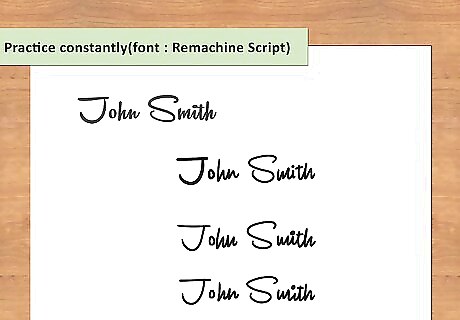
Practice constantly. In order to consistently produce a signature that you like, you need to practice at every opportunity. Your hand will learn the rhythm and pattern of your signature through repetition until finally you don’t need to think consciously about it. Every time you need to sign something make a point of trying to do your new signature. Write your name over and over again on a notepad. You can do this during classes or meetings when you might otherwise doodle, or sitting at home while watching television. Eventually your signature will become second nature.

Be consistent. Your autograph is an important identifier. When you have established a new signature be sure that it is on the back of any credit cards and that you use it consistently when signing documents and receipts. When others compare your signature to verify your identity it should be a close match.
Sending The Right Message With Your Signature

Choose a size. How large your signature is sends a message about your confidence in yourself. A signature that is larger than the surrounding print sends a message of high self-confidence, but it may also be read as bravado or a front. A signature that is smaller may reflect self-motivation but it can also appear that the writer lacks confidence. To begin with it may be best to use a medium size signature. This conveys a sense of balance and modesty.

Assess legibility. Often those who write illegibly attribute this to lack of time, but it does not take significantly longer to write a readable name. A signature that cannot be easily deciphered or read may send the message that the writer believes his or her identity should be obvious to all. This may come across as arrogant or careless.
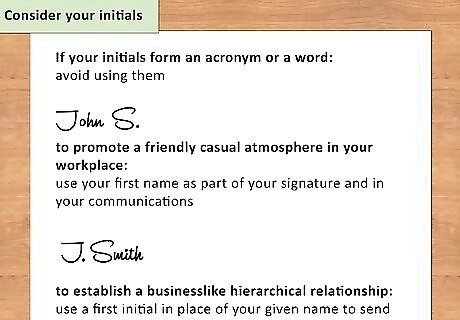
Consider your initials. Using an initial in lieu of a first name can send a message of formality. Some initials spell out words with which you may not want to be associated. If your initials form an acronym or a word, avoid using them. If you are trying to promote a friendly casual atmosphere in your workplace, use your first name as part of your signature and in your communications. If you are trying to establish a businesslike hierarchical relationship, use a first initial in place of your given name to send a message of formality.
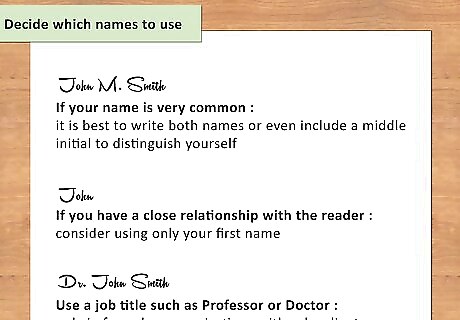
Decide which names to use. How much of your signature you write may depend on the circumstances. Very few people are universally known by only one name. Celebrities can get away with signing just their first name to everything, but in most cases this is not a good idea. If your name is very common, and the recipient of your communication might be confused, it is best to write both names or even include a middle initial to distinguish yourself. If you have a close relationship with the reader and wish to send a message of intimacy, consider using only your first name. Letters to family members are a good example of this. Use a job title such as Professor or Doctor only in formal communications with subordinates. This can be helpful in reestablishing a businesslike atmosphere with someone who is too casual.
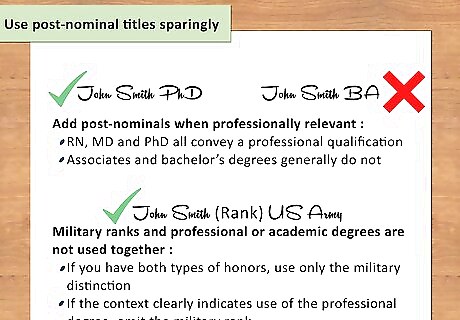
Use post-nominal titles sparingly. If you have worked hard to earn a professional or academic qualification it can be tempting to add letters such as BA or MD to the end of your signature. Post-nominals are used only professionally and should never be used socially. Add post-nominals when professionally relevant. RN, MD and PhD all convey a professional qualification. Associates and bachelor’s degrees generally do not, and so should not be added to a signature. The information can be included in your resume. Military ranks and professional or academic degrees are not used together. If you have both types of honors, use only the military distinction. If the context clearly indicates use of the professional degree, omit the military rank. Consider the context. If you are a professor and everyone in your department has a PhD you may come across as foolish by insisting on this designation amongst your peers. In such cases be formal with subordinates if you choose and less formal with peers.



















Comments
0 comment